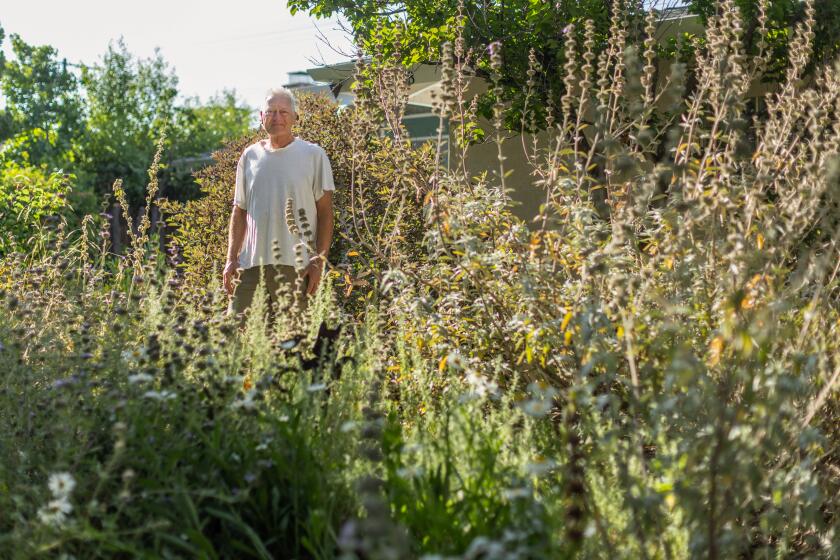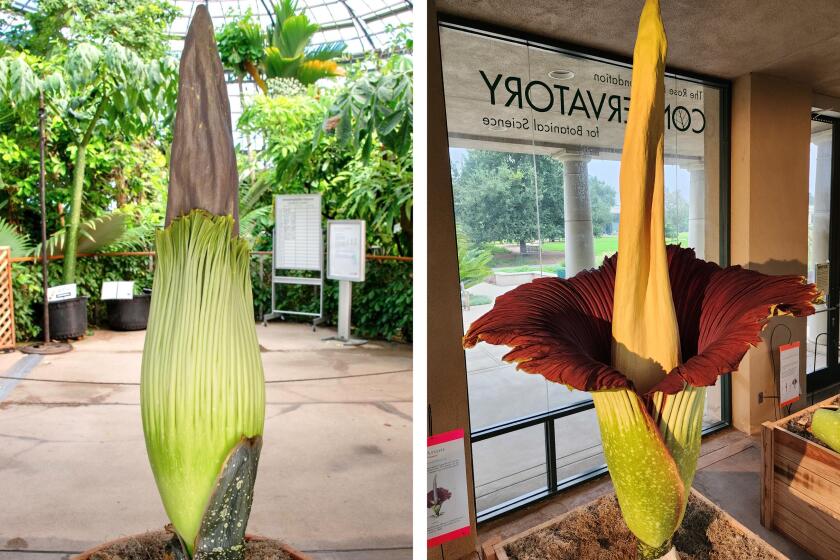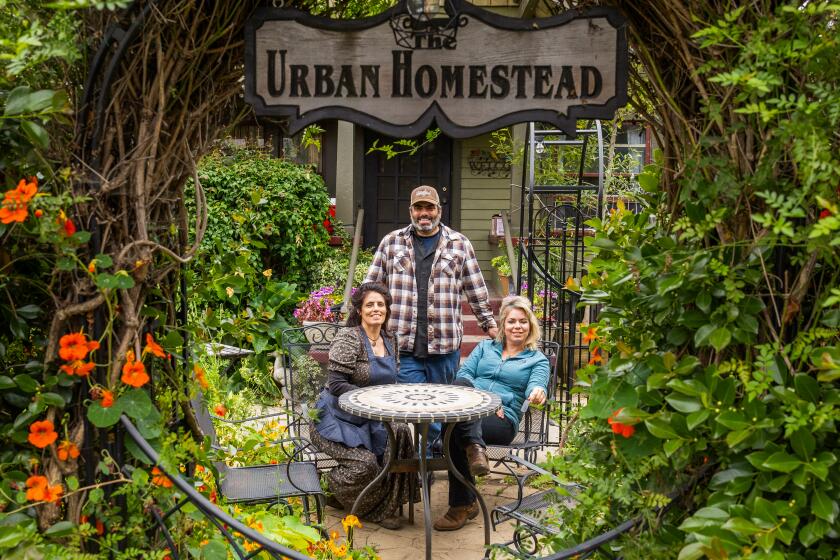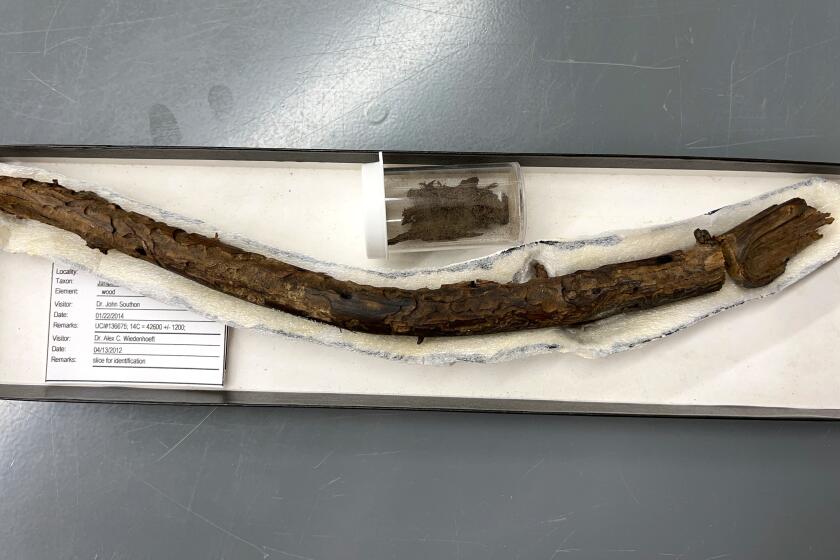L.A. Grower Helped to Popularize Poinsettia
An unlikely candidate for holiday decorating, the colorful desert-native poinsettia has become a Christmas tradition through no small effort.
Indigenous to Mexico and Central America, where they flourish in the highlands, writes Matthew Holm in Country Living, these warm-weather-loving plants, which favor moist, well-drained soil and indirect but plentiful sunlight, are most often found in wooded ravines or rocky hillsides.
Poinsettias have ordinary leaves as well as modified leaves called bracts that turn from green to crimson in response to the lengthening nights that accompany the approach of winter. At the center of the radiating bracts lie tiny golden blossoms, the plants’ true flowers.
Wild poinsettias are much leggier, larger than their potted cousins and grow as tall as 16 feet. They also have longer, narrower leaves and bracts than commercial varieties, whose foliage tends to be oak-leaf shaped.
The name poinsettia comes from Joel R. Poinsett, a United States statesman and amateur botanist who, among other things, helped found the National Institute for the Useful Arts, a forerunner of the Smithsonian Institution.
During the 1820s, Poinsett served as a diplomat and then as the first U.S. minister to Mexico, where he came upon the vibrant red-and-green plant. When he returned to his home in South Carolina in 1829, Poinsett brought with him samples of the plant to which he lent his name and grew them in his greenhouses and casually distributed them among friends and colleagues.
The fragile, temperamental poinsettia was little more than a curiosity in the East and a simple fresh flower in the West until 90 years later, when Los Angeles farmer Paul Ecke began developing a poinsettia cultivar that could survive as a potted indoor plant.
In 1923, the Ecke family moved its operations south from Hollywood to Encinitas to escape the increasing crowding of Los Angeles and also to be close to good water supply and a railroad siding. Here, Ecke faced a new challenge: He had created a plant that could survive transport outside the Southwest. Now he had to create a demand for it.
Before that time, poinsettias were not associated with Christmas in any way. Paul Ecke traveled across the country, promoting and selling his plants, convincing growers, wholesalers, retailers, and ultimately flower lovers, that the poinsettia was a great gift and colorful decorating idea for the Christmas season.
Grown in the fields of Encinitas, Ecke poinsettias were shipped to buyers all across the country until the 1960s, when his son, Paul Ecke II, trained in horticulture at Ohio State University, took the reins of the family business. Not only did he direct the company to develop poinsettias in the wide range of colors we find today--including ones with pink, white, yellow, and mottled bracts--but he moved much of the crop indoors to greenhouses and changed the company’s sales focus.
While the Paul Ecke Ranch still delivers hundreds of thousands of potted poinsettias to buyers in California, Arizona and Nevada each year, its main product is not finished plants, but vegetative cuttings.
The millions of cuttings that Ecke ships each year are the beginning of poinsettias across the United States and in more than 50 other countries--a total of 80% of all flowering poinsettias in the world.



